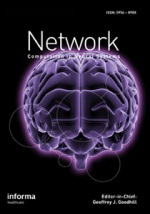
Artificial neural networks (ANNs), usually simply called neural networks (NNs) or neural nets, are computing systems inspired by the biological neural networks that constitute animal brains.

Machine learning (ML) is a field of inquiry devoted to understanding and building methods that 'learn', that is, methods that leverage data to improve performance on some set of tasks. It is seen as a part of artificial intelligence. Machine learning algorithms build a model based on sample data, known as training data, in order to make predictions or decisions without being explicitly programmed to do so. Machine learning algorithms are used in a wide variety of applications, such as in medicine, email filtering, speech recognition, agriculture, and computer vision, where it is difficult or unfeasible to develop conventional algorithms to perform the needed tasks. A subset of machine learning is closely related to computational statistics, which focuses on making predictions using computers, but not all machine learning is statistical learning. The study of mathematical optimization delivers methods, theory and application domains to the field of machine learning. Data mining is a related field of study, focusing on exploratory data analysis through unsupervised learning. Some implementations of machine learning use data and neural networks in a way that mimics the working of a biological brain. In its application across business problems, machine learning is also referred to as predictive analytics.
Computational neuroscience is a branch of neuroscience which employs mathematical models, computer simulations, theoretical analysis and abstractions of the brain to understand the principles that govern the development, structure, physiology and cognitive abilities of the nervous system.
Neuroevolution, or neuro-evolution, is a form of artificial intelligence that uses evolutionary algorithms to generate artificial neural networks (ANN), parameters, and rules. It is most commonly applied in artificial life, general game playing and evolutionary robotics. The main benefit is that neuroevolution can be applied more widely than supervised learning algorithms, which require a syllabus of correct input-output pairs. In contrast, neuroevolution requires only a measure of a network's performance at a task. For example, the outcome of a game can be easily measured without providing labeled examples of desired strategies. Neuroevolution is commonly used as part of the reinforcement learning paradigm, and it can be contrasted with conventional deep learning techniques that use gradient descent on a neural network with a fixed topology.
Neuromorphic engineering, also known as neuromorphic computing, is the use of electronic circuits to mimic neuro-biological architectures present in the nervous system. A neuromorphic computer/chip is any device that uses physical artificial neurons to do computations. In recent times, the term neuromorphic has been used to describe analog, digital, mixed-mode analog/digital VLSI, and software systems that implement models of neural systems. The implementation of neuromorphic computing on the hardware level can be realized by oxide-based memristors, spintronic memories, threshold switches, transistors, among others. Training software-based neuromorphic systems of spiking neural networks can be achieved using error backpropagation, e.g., using Python based frameworks such as snnTorch, or using canonical learning rules from the biological learning literature, e.g., using BindsNet.
The expression computational intelligence (CI) usually refers to the ability of a computer to learn a specific task from data or experimental observation. Even though it is commonly considered a synonym of soft computing, there is still no commonly accepted definition of computational intelligence.
Neural engineering is a discipline within biomedical engineering that uses engineering techniques to understand, repair, replace, or enhance neural systems. Neural engineers are uniquely qualified to solve design problems at the interface of living neural tissue and non-living constructs.
Natural Computing is a scientific journal covering natural computing research. It has been published quarterly by Springer Verlag in print and online since 2002.
IEEE Transactions on Evolutionary Computation is a bimonthly peer-reviewed scientific journal published by the IEEE Computational Intelligence Society. It covers evolutionary computation and related areas including nature-inspired algorithms, population-based methods, and optimization where selection and variation are integral, and hybrid systems where these paradigms are combined. The editor-in-chief is Carlos A. Coello Coello (CINVESTAV). According to the Journal Citation Reports, the journal has a 2021 impact factor of 16.497.

Long short-term memory (LSTM) is an artificial neural network used in the fields of artificial intelligence and deep learning. Unlike standard feedforward neural networks, LSTM has feedback connections. Such a recurrent neural network (RNN) can process not only single data points, but also entire sequences of data. For example, LSTM is applicable to tasks such as unsegmented, connected handwriting recognition, speech recognition, machine translation, robot control, video games, and healthcare. LSTM has become the most cited neural network of the 20th century.

Neural Computation is a monthly peer-reviewed scientific journal covering all aspects of neural computation, including modeling the brain and the design and construction of neurally-inspired information processing systems. It was established in 1989 and is published by MIT Press. The editor-in-chief is Terrence J. Sejnowski. According to the Journal Citation Reports, the journal has a 2014 impact factor of 2.207.
The IEEE Systems, Man, and Cybernetics Society is a professional society of the IEEE. It aims "to serve the interests of its members and the community at large by promoting the theory, practice, and interdisciplinary aspects of systems science and engineering, human-machine systems, and cybernetics".

The SCImago Journal Rank (SJR) indicator is a measure of the scientific influence of scholarly journals that accounts for both the number of citations received by a journal and the importance or prestige of the journals where the citations come from. A journal's SJR indicator is a numeric value representing the average number of weighted citations received during a selected year per document published in that journal during the previous three years, as indexed by Scopus. Higher SJR indicator values are meant to indicate greater journal prestige. SJR is developed by the Scimago Lab, originated from a research group at the University of Granada.
Neurocomputing is a peer-reviewed scientific journal covering reseach on artificial intelligence, machine learning, and neural computation. It was established in 1989 and is published by Elsevier. The editor-in-chief is Zidong Wang. Independent scientometric studies noted that despite being one of the most productive journals in the field, it has kept its reputation across the years intact and plays an important role in leading the research in the area. The journal is abstracted and indexed in Scopus and Science Citation Index Expanded. According to the Journal Citation Reports, its 2020 impact factor is 5.719.

Josef "Sepp" Hochreiter is a German computer scientist. Since 2018 he has led the Institute for Machine Learning at the Johannes Kepler University of Linz after having led the Institute of Bioinformatics from 2006 to 2018. In 2017 he became the head of the Linz Institute of Technology (LIT) AI Lab. Hochreiter is also a founding director of the Institute of Advanced Research in Artificial Intelligence (IARAI). Previously, he was at the Technical University of Berlin, at the University of Colorado at Boulder, and at the Technical University of Munich. He is a chair of the Critical Assessment of Massive Data Analysis (CAMDA) conference.

Deep learning is part of a broader family of machine learning methods based on artificial neural networks with representation learning. Learning can be supervised, semi-supervised or unsupervised.
IEEE Transactions on Neural Networks and Learning Systems is a monthly peer-reviewed scientific journal published by the IEEE Computational Intelligence Society. It covers the theory, design, and applications of neural networks and related learning systems. According to the Journal Citation Reports, the journal had a 2021 impact factor of 14.255.
This glossary of artificial intelligence is a list of definitions of terms and concepts relevant to the study of artificial intelligence, its sub-disciplines, and related fields. Related glossaries include Glossary of computer science, Glossary of robotics, and Glossary of machine vision.
An AI accelerator is a class of specialized hardware accelerator or computer system designed to accelerate artificial intelligence and machine learning applications, including artificial neural networks and machine vision. Typical applications include algorithms for robotics, internet of things, and other data-intensive or sensor-driven tasks. They are often manycore designs and generally focus on low-precision arithmetic, novel dataflow architectures or in-memory computing capability. As of 2018, a typical AI integrated circuit chip contains billions of MOSFET transistors. A number of vendor-specific terms exist for devices in this category, and it is an emerging technology without a dominant design.

Amir Hussain is a cognitive scientist, the director of Cognitive Big Data and Cybersecurity (CogBID) Research Lab at Edinburgh Napier University He is a professor of computing science. He is founding Editor-in-Chief of Springer Nature's internationally leading Cognitive Computation journal and the new Big Data Analytics journal. He is founding Editor-in-Chief for two Springer Book Series: Socio-Affective Computing and Cognitive Computation Trends, and also serves on the Editorial Board of a number of other world-leading journals including, as Associate Editor for the IEEE Transactions on Neural Networks and Learning Systems, IEEE Transactions on Systems, Man and Cybernetics (Systems) and the IEEE Computational Intelligence Magazine.








